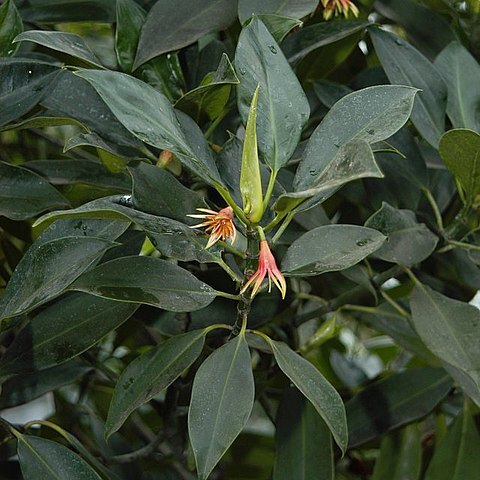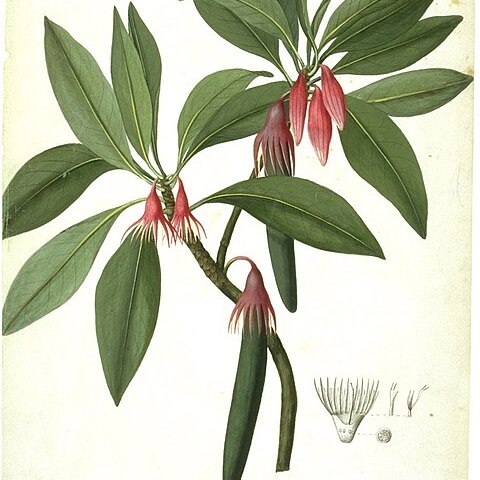Trees, producing kneelike pneumatophores. Trunk basally buttressed, often with a cone of stilt roots at base. Leaf scars showing evidence of 3 vascular bundles. Leaves entire. Inflorescences cymes, 1-5-flowered, pedunculate. Flowers generally nodding. Calyx accrescent, tube extending beyond ovary; lobes 8-14(-16), subulate-lanceolate. Petals as many as calyx lobes, usually 2-lobed, fringed with hairs and/or bristles. Stamens 2 × as many as petals, in unequal pairs opposite petals, each pair enclosed by inrolled petal margins; anthers introrse, dehiscing lengthwise. Ovary inferior, 2-4-loculed; ovules 2 per locule; style lobes 2-4. Fruit campanulate. Seed usually solitary, viviparous; hypocotyl terete or obscurely ribbed.
Trees of tidal habitats, often buttressed at base and with knee-like pneumatophores. Leaves dark green above, black-dotted below; stipules 2–4 cm long. Flowers solitary or in 2–10-flowered cymes; bracteoles absent. Sepals 8–16, free. Petals as many as sepals, usually 2-lobed, fringed with hairs and/or bristles. Stamens twice as many as petals, in unequal pairs opposite petals, each pair enclosed by inrolled petal margins; anthers linear or lanceolate or oblong. Ovary inferior, 2–4-locular; stigma slightly lobed. Fertile seeds 1 per fruit, viviparous. Propagule falling with fruit attached; hypocotyl terete or angular, obtuse.


